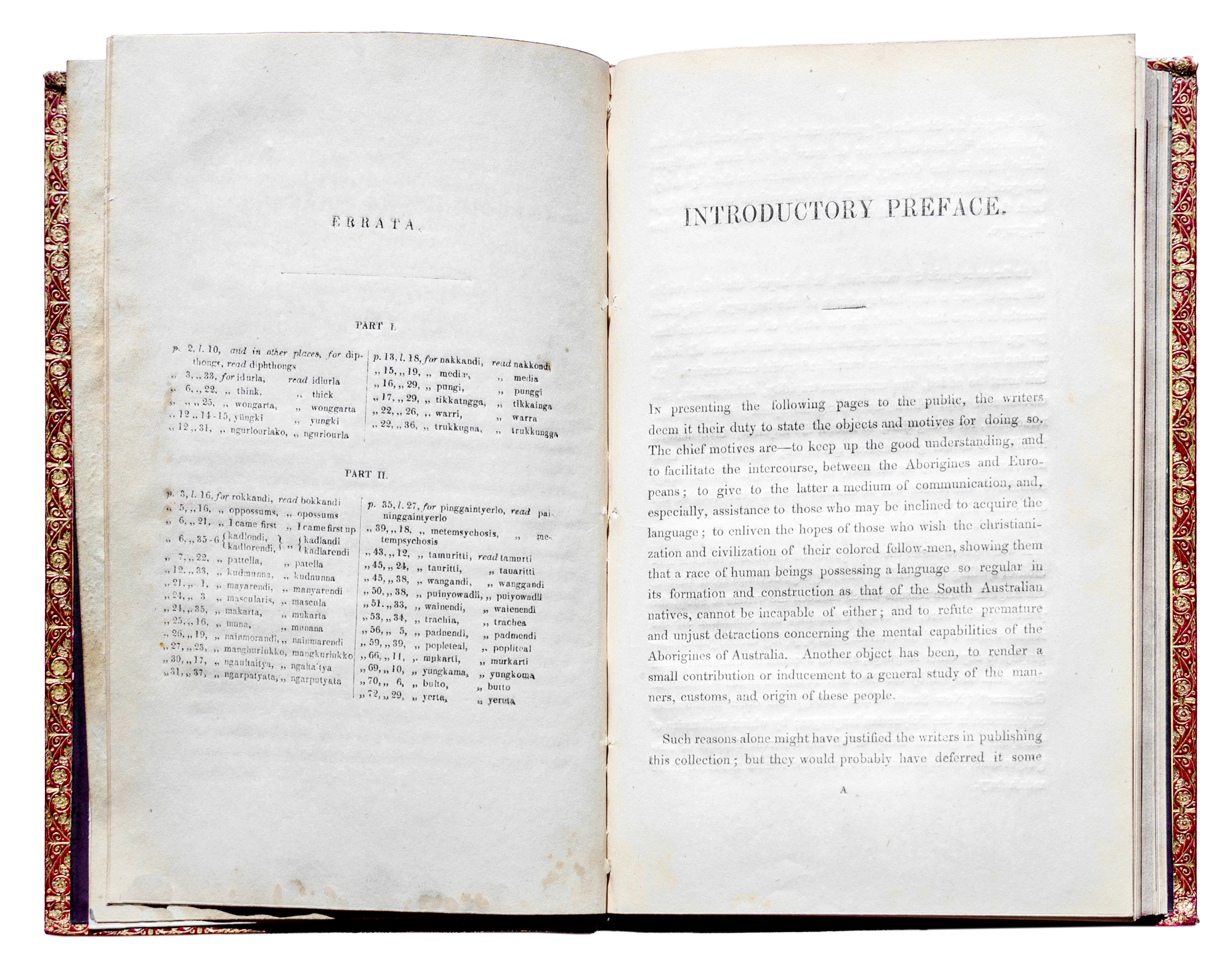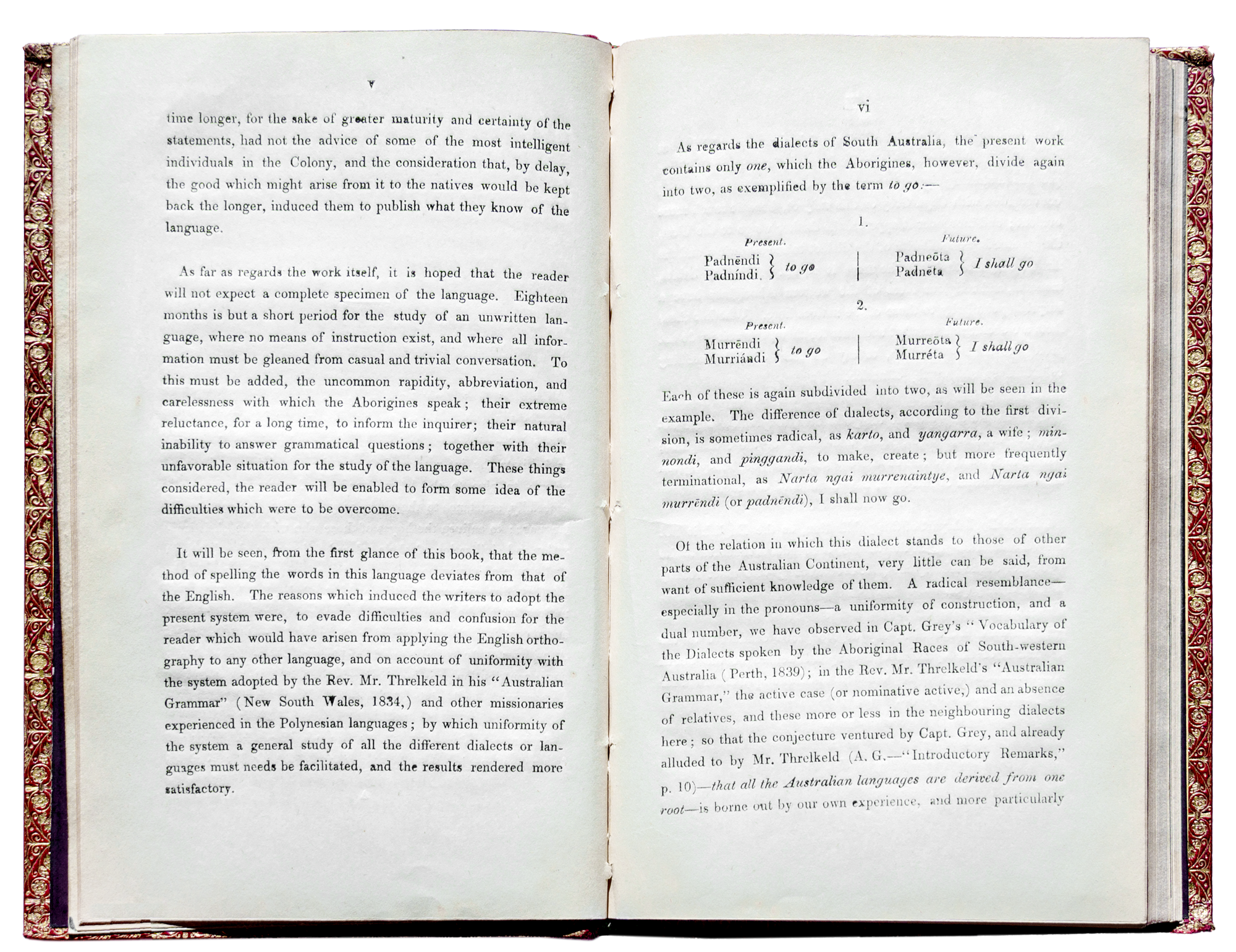

This vocabulary and grammatical description of the original Adelaide Plains language (now known as ‘Kaurna’) was published in 1840 by Lutheran missionaries C.G. Teichelmann and C.W. Schürmann. It is a treasure for both Kaurna descendants and linguists. The reclamation of Kaurna, evident in recent re-namings of the city’s parklands and buildings, for instance, could not have occurred without the missionaries’ work.


Amid concern about the treatment of subjects of the British Empire, Teichelmann and Schürmann were recruited to South Australia from the Evangelical Lutheran Mission Society in Dresden by George Fife Angas, chairman of the South Australian Company. Their role was to found a ‘civilizing mission’ to protect the rights of the colony’s first inhabitants and to learn and record their language in order to carry out two interrelated tasks essential to evangelism: the translation of religious texts, and the preparation of materials for use in vernacular literacy programmes.
The very early period of South Australian colonisation was characterised by a climate of optimism towards Aboriginal people. In the introduction to this grammar Teichelmann and Schürmann explain that although postponing the publication would have allowed ‘greater maturity, and certainty of statements’, they were advised by colonial authorities to publish quickly for ‘the good which might arise from it to the natives.’ The missionaries drew up this detailed description of Kaurna in less than two years.
This work was the second-earliest grammar of an Australian language. It set a standard for other grammatical descriptions of South Australian languages made in the first decade after colonisation. Its influence continued into the twentieth century among later Lutheran missionaries’ descriptions of Diyari and Arrernte at the Killalpaninna and Hermannsburg missions in Central Australia.
Teichelmann and Schürmann’s mission to Aboriginal people was short-lived and was deemed to be a failure; by the mission’s closure in 1840 no baptisms had occurred. Success of their endeavour may be measured by the missionaries’ outstanding legacy within language reclamation programmes, and by enhanced understanding of the lexicon and grammatical structure of Australian languages, many of which disappeared before such substantial description was made.
© The Royal Geographical Society of South Australia